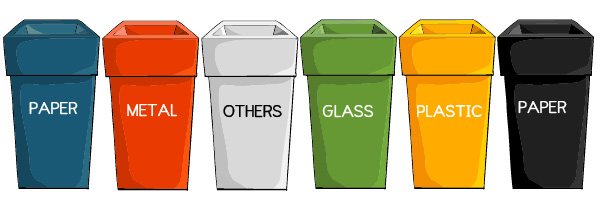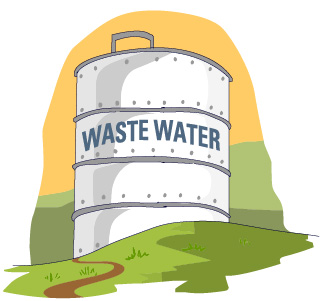- Natural Resources
Resource Recovery
In recent years, waste has been viewed as a potential resource and not something that must end up in the landfill. From paper, plastics, wood, metals, and even wastewater, experts believe that each component of waste can be tapped and turned into something useful.
Fossil fuel use by the pulp and paper industry in the United States of America declined by more than 50% between 1972 and 2002, mainly through energy efficiency measures, power recovery through co-generation, and increased use of biomass.
Resource recovery is the separation of certain materials from the waste we produce to use them again or turn them into new raw materials for use again.
It involves composting and recycling of materials that are heading to the landfill. Here is an example: Wet organic waste such as food and agricultural waste is considered waste after food consumption or after an agricultural activity. Traditionally, we collect them and send them to a landfill. In Resource Recovery, we collect and divert to composting or anaerobic digestion to produce biomethane. We can also recover nutrients through regulator-approved use of residuals.

This concept can be applied to household settings too. Many communities have places that residents can drop off waste that they have already sorted from their homes. That makes it easy for waste recovery organizations to pick them up for further processing.
Recovering waste is not an easy task. It involves good planning, education, community participation, and the use of technology. But it has huge environmental and economic benefits and must be seriously considered.
Resource recovery benefits us because it reduces our need to tap into new raw materials, thereby saving the environment. For example, by separating and collecting all paper products from the waste we create, we can recycle them to reduce the need for new pulp that comes from timber. Less energy is used in recycling old materials than new raw materials.
Think of wastewater and stormwater as another example. The demand for potable water can be reduced if we can divert all wastewater and stormwater for treatment and re-use. We can use it for gardening, agriculture, sanitation (cleaning), and even heating by energy producers.
In Victoria, Australia reclaimed water is used to irrigate vineyards, tomatoes, potatoes, and other crops in addition to traditional landscape irrigation.
In Mexico City, nearly 46 million gallons (174 million liters) per day of reclaimed water is used for irrigation of green areas, recharge of recreational lakes, and agriculture.
Our research for this topic included these sources:
1. UNEP. MANAGING AND CONSERVING THE NATURAL RESOURCE BASE FOR SUSTAINED ECONOMIC AND SOCIAL DEVELOPMENT. February 7, 2014
2,3 RESOURCE RECOVERY & REUSE SERIES 4. Global Experiences in Water Reuse
by Jonathan Lautze, Emilie Stander, Pay Drechsel, Allegra K. da Silva and Bernard Keraita
CGIAR Research Program on Water, Land and Ecosystems. ISBN 978-92-9090-791-6
